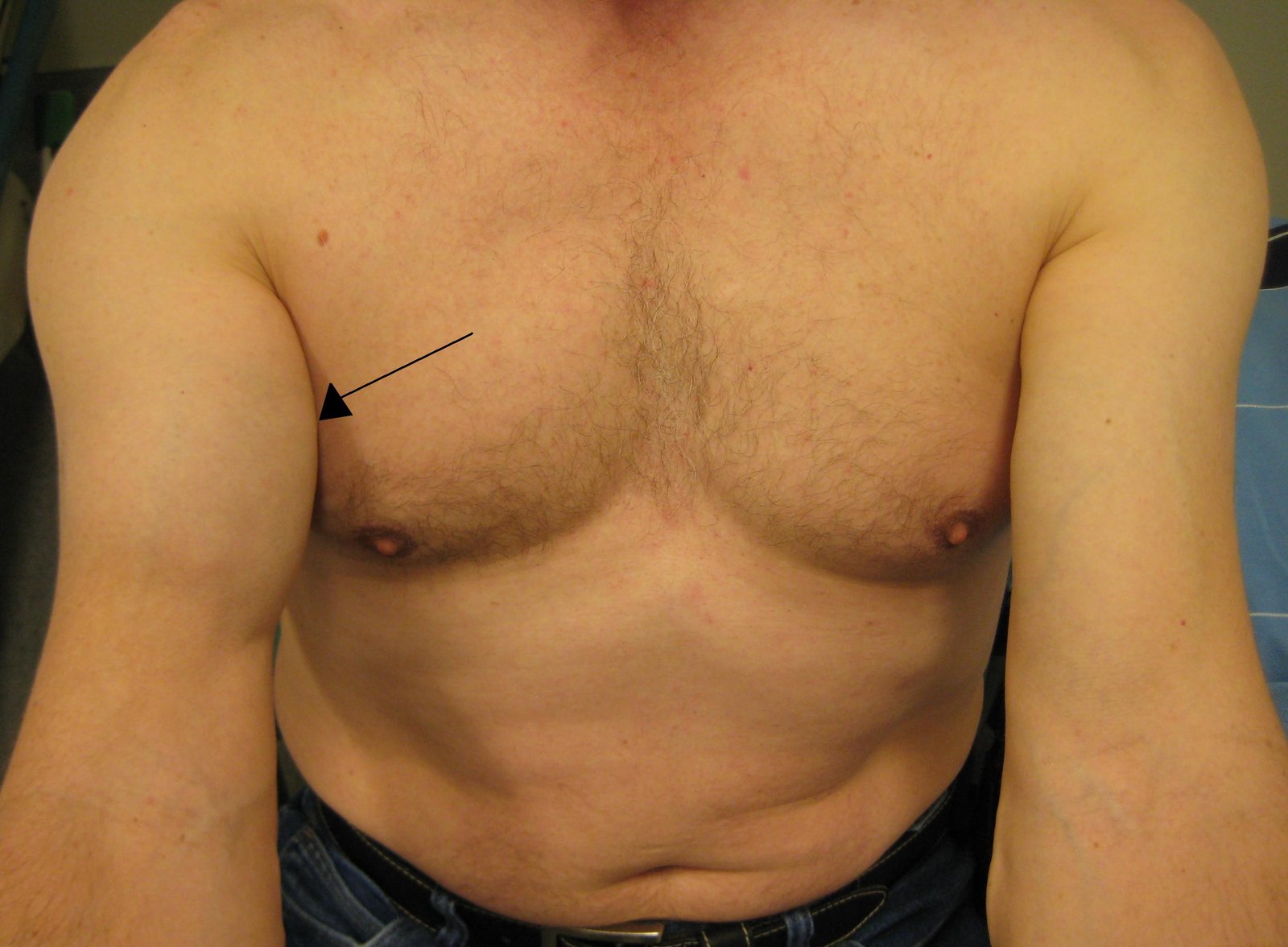Physical Therapist’s Guide to Ankylosing Spondylitis Ankylosing spondylitis (AS) is an inflammatory disease that causes pain and stiffness in the spine, pelvis, and other joints, like the hips, knees, feet, and shoulders. AS is a chronic (lifelong) disease, and it is hereditary. Although a majority of people who have AS carry a gene called HLA-B27,
Physical Therapist’s Guide to Ankylosing Spondylitis
Ankylosing spondylitis (AS) is an inflammatory disease that causes pain and stiffness in the spine, pelvis, and other joints, like the hips, knees, feet, and shoulders. AS is a chronic (lifelong) disease, and it is hereditary. Although a majority of people who have AS carry a gene called HLA-B27, about 80% of people who have inherited the gene from a parent with AS do not develop the disease. The onset of AS is usually diagnosed in individuals between 17 and 45 years of age. Males are diagnosed 2 to 3 times more often than females, and tend to have more severe disease symptoms than females. Physical therapists help people with AS maintain productive lives by working with them to increase their strength, muscle flexibility, and joint mobility, and to improve their posture.
What is Ankylosing Spondylitis?
Ankylosing spondylitis (AS) is an inflammatory disease affecting the spine, pelvis, and joints throughout the body. AS causes abnormal bone growth, and causes joints to fuse (grow together) in the spine and in the sacroiliac joints (located between each hip and the pelvis). Vital organs like the heart, lungs, and eyes may also be affected. Rare complications include inflammation of the heart, scarring of the nerves of the spine, and kidney problems related to the long-term use of medication.
Although there is currently no cure for AS, proper treatment can help decrease the pain and stiffness associated with the disease. Medications decrease inflammation and localized swelling. If the hip joint becomes stiff and painful, total hip replacement may be performed.
How Does it Feel?
The first and most common symptom experienced with the onset of AS is pain in the sacroiliac joints and the low back. You may also gradually experience hip and shoulder pain. Pain is often accompanied by morning stiffness or stiffness after periods of prolonged inactivity, and usually improves after exercise or activity. Other common symptoms are fever, generalized fatigue, and loss of appetite.
Bony fusion or ankylosis typical of AS in the joints of the neck, spine, and hips causes progressive stiffness and can reduce your ability to turn your head, stand upright, or bend. AS can make maintaining good posture difficult, and can cause you to stoop forward. Poor posture makes it easier to lose your balance, and causes difficulty in walking, increasing the risk of falling. In advanced cases, osteoporosis (thinning of the bones) may occur, which increases the risk of fractures.
Inflammation is very common in AS. The inflammation usually is felt at the sites where ligaments and tendons attach to the bone. These sites are tender to touch and sometimes called “hot spots.” The heel and the back of the foot are common sites for tender spots, which can cause difficulty in standing and walking.
People with AS may develop difficulty breathing because the lungs and the joints where the ribs and spine attach become stiff, limiting chest expansion and causing shortness of breath, and increasing the risk of chest infections.
AS can also affect the soft tissues of the eye (in about 40% of cases), resulting in swelling in the eye (uveitis). Individuals may also experience eye redness, pain, “floaters,” and an increased sensitivity to light.
How Is It Diagnosed?
If you see your physical therapist first for symptoms, such as chronic back pain, the physical therapist will take your medical history, and ask you to describe how your symptoms occurred, what symptoms you experienced first, and if they get worse with inactivity and better with activity.
Your physical therapist will perform a thorough evaluation of your posture, and the range of motion (movement) of your spine, hips, knees, and shoulders. Your physical therapist will also check to see if you have any tender spots around your spine, hips, and sacroiliac joints, and gently assess your ability to bend forward, bend backward, squat, and walk.
When your physical therapist suspects AS, your physical therapist will also measure your chest expansion when you take a deep breath and exhale. That will indicate how the AS may be affecting your rib joints and breathing function.
Your physical therapist will also observe your ability to walk and how you move from sitting to standing, and test your balance to determine if you have a fall risk.
If your physical therapist suspects AS, the physical therapist will consult with your physician for further tests, such as an X-ray or MRI of the spine and sacroiliac joints. Blood tests and genetic testing may also be recommended; a blood test positive for the HLA-B27 gene can indicate a risk of developing AS.
How Can a Physical Therapist Help?
Physical therapy will help improve your posture and joint mobility, reduce pain, and help you perform your everyday functional activities more easily. Your physical therapist may teach you:
Posture Training to improve your posture and help you avoid slouching or forward bending. This training is important to ensure that you maintain an upright posture.
Strengthening Exercises to strengthen your back and abdominal muscles and help you maintain proper posture and walking, and perform your activities of daily living.
Flexibility Exercises to maintain and improve joint mobility. Exercises for your leg and chest muscles, and gentle range-of-motion exercises help keep the spine and other joints from getting stiff. Aquatic exercises have been shown to decrease joint pain and improve movement in patients with AS.
Stretching Exercises for the trunk muscles to improve chest expansion.
Deep-Breathing Exercises to improve chest expansion and help you breathe better. Improved breathing increases oxygen and blood flow in the body, which can help decrease stiffness, pain, and fatigue.
Pain Management Techniques, such as using ice or heat packs to manage inflammation and pain in the joints. Your physical therapist may prescribe a TENS unit, which is an electrical stimulation treatment used to alleviate pain.
Individual Activities to improve your functional ability and energy, and help reduce fatigue. Your physical therapist will teach you how to move your body efficiently when performing daily activities to avoid strain. Your physical therapist may recommend using an assistive device, such as a cane or walker to improve your walking, lessen pain, and lower your risk of falling.
Your physical therapist will partner with you to ensure that you maintain your best posture, flexibility, joint mobility, and muscle strength, so you can lead a productive, fulfilling life. We are here to help!
After Surgery
If your hip joints have developed severe arthritis, your physician may recommend a total hip replacement. Your physical therapist will help you improve your walking, your joint range of motion, and your leg strength following surgery, so you can safely return to your usual daily activities.
Can this Injury or Condition be Prevented?
AS is an inherited disease and it cannot be prevented. However, functional limitations may be reduced or prevented by participating daily in a program of posture correction, stretching, and strengthening exercises.
Real Life Experiences
John is a 36-year-old laborer who works at a construction site. His job duties involve heavy lifting, pushing, pulling, bending, and climbing ladders. Approximately 6 months ago, John started having pain in his low back. He attributed the pain to his work and ignored it. As time went by, however, the pain did not go away. John also started to notice stiffness in his low back. The stiffness and pain were especially worse when he woke up in the morning, and got better as the day progressed. Recently, he started having severe pain in his hips and tailbone areas, and felt that it was getting harder to do his job every day. He decided to see his physical therapist.
John’s physical therapist asked him about his symptoms, and reviewed his family health history. He learned that John’s family had a history of ankylosing spondylitis (AS).
He then performed a physical evaluation and checked John’s posture, and the flexibility and mobility of his spine, shoulders, and hips. He tested his muscle strength at the spine, hips, legs, shoulders, and arms. His physical therapist gently examined John for any tender or “hot spots” in these same areas. He measured John’s chest expansion, and his ability to perform activities like squatting, bending, and walking.
John reported he also had some vision problems; his physical therapist recommended an eye exam. Due to John’s age and positive family history for AS, his physical therapist consulted with John’s physician, who ordered X-rays of John’s spine and pelvis, and blood tests to ensure an accurate diagnosis.
The testing confirmed that John had AS. His physician prescribed medication, and John’s physical therapist designed an 8-week program of physical therapy.
During the course of John’s physical therapy visits, John learned exercises to improve his stooped-forward posture, and increase mobility in his spine and hip joints. John’s physical therapist taught him breathing exercises to improve his lung function, and gentle stretching for his chest muscles.
John was hardly able to bend backwards; his physical therapist taught him gentle exercises to extend his spine backwards, flexibility exercises for the trunk and leg muscles, and strengthening exercises.
As John’s strength improved and his pain decreased, he learned proper body mechanics for heavy lifting to prepare for his return to work.
When his physical therapy sessions ended, John returned to work feeling much stronger and experiencing far less pain. He has continued performing a home-exercise program designed just for him by his physical therapist. He feels much more energetic and less stiff than he did before his diagnosis. John also notes an overall improvement in his quality of life.
What Kind of Physical Therapist Do I Need?
All physical therapists are prepared through education and clinical experience to treat problems of the spine. However, you may want to consider:
- A physical therapist who has treated people with ankylosing spondylitis. Some physical therapists have a practice with an orthopedic focus.
- A physical therapist who is a board-certified clinical specialist, or who completed a residency or fellowship in orthopedic physical therapy. This therapist has advanced knowledge, experience, and skills that may apply to your condition.
You can find physical therapists who have these and other credentials by using Find a PT, the online tool built by the American Physical Therapy Association to help you search for physical therapists with specific clinical expertise in your geographic area.
General tips when you’re looking for a physical therapist (or any other health care provider):
- Get recommendations from family and friends or from other health care providers.
- When you contact a physical therapy clinic for an appointment, ask about the physical therapists’ experience in helping people with ankylosing spondylitis.
- During your first visit with the physical therapist, be prepared to describe your symptoms in as much detail as possible, and report activities that make your symptoms worse.
Further Reading
The American Physical Therapy Association (APTA) believes that consumers should have access to information that could help them make health care decisions, and also prepare them for their visit with their health care provider.
The following articles provide some of the best scientific evidence related to physical therapy treatment of Ankylosing Spondylitis. The articles report recent research and give an overview of the standards of practice both in the United States and internationally. The article titles are linked either to a PubMed* abstract of the article or to free full text, so that you can read it or print out a copy to bring with you to your health care provider.
Gianotti E, Trainito S, Arioli G, Rucco V, Masiero S. Effects of physical therapy for the management of patients with ankylosing spondylitis in the biological era. Clin Rheumatol. 2014;33(9):1217–1230. Article Summary in PubMed.
Akyol G, Ozalevli S, Ucan ES. The relationship between pulmonary function and exercise capacity and quality of life in patients with ankylosing spondylitis [article in Turkish]. Tuberk Toraks. 2013;61(3):227–234. Free Article. Article Summary in PubMed.
National Institute of Arthritis and Musculoskeletal and Skin Disease. What is ankylosing spondylitis? Fast facts: an easy-to-read series of publications for the public. Published April 2011. Accessed February 3, 2015.
Ince G, Sarpel T, Durgun B, Erdogan S. Effects of a multimodal exercise program for people with ankylosing spondylitis [erratum in: Phys Ther. 2006;86(10):1452. Phys Ther. 2006;86(7):924–935. Free Article.
Spondylitis Association of America. About ankylosing spondylitis. Accessed February 3, 2015.
*PubMed is a free online resource developed by the National Center for Biotechnology Information (NCBI). PubMed contains millions of citations to biomedical literature, including citations in the National Library of Medicine’s MEDLINE database.
Authored by Pranjali Sathe, PT, DPT, OCS. Reviewed by the MoveForwardPT.com editorial board.







Leave a Comment
You must be logged in to post a comment.